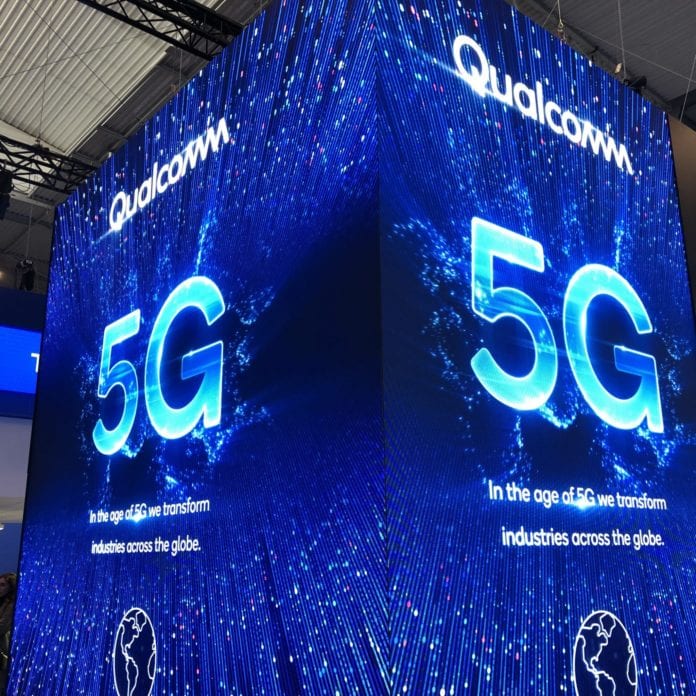LTE demand weakening as operators ramp 5G investment
The pace of 5G network deployments is markedly faster than with LTE. Qualcomm CEO Steve Mollenkopf expects more than 20 operator network and OEM device launches 12 months after the first compared to four operators and three OEMs a year after 4G become available. And to use those networks, customers will need compatible phones, which will be a good thing for Qualcomm.
Discussing the companies Q3 2019 performance, Mollenkopf noted “headwinds” due to Qualcomm’s supplier deal with Huawei and the transition from LTE to 5G in China, but looked forward to an “inflection point” in the first quarter next year.
He projected the three Chinese operators would deploy roughly 100,000 5G base stations by the end of 2019. “Which, to put in context, is the equivalent of the scale of the entire network of a large u.S. wireless operator.” And as China rolls out 5G, operators in the U.S. will expand offerings across millimeter wave–“a mandatory requirement for all major carriers in the United States,” the CEO said–and sub-6 GHz frequencies, which will only be boosted by the expected merger of T-Mobile US and Sprint.
As for Huawei, federal officials have put the Chinese ICT giant on an “entity list,” cutting off its access to some equipment made in the United States.
“The Huawei export ban, along with a pivot from 4G to 5G, which accelerated over the past couple of months, has contributed to industry conditions, particularly in China, that we expect will create headwinds in our next two fiscal quarters. As a result of the export ban, Huawei shifted their emphasis to building market share in the domestic China market where we do not see the corresponding benefit in our product or licensing revenue. In addition, our customers in the china market are working through their existing 5G inventory…as they shift their priorities to their 5G launches in early 2020.”
In the third-quarter, Qualcomm saw revenues of $4.9 billion, down 13% from the same quarter last year. Net income was down 34% year-over-year to $1 billion. Worth noting that in the third quarter Apple and Qualcomm resolved outstanding litigation resulting in $4.7 billion in previously disputed licensing revenue. Click here for the full Q3 financials.
Despite challenges, “By the first calendar quarter of 2020,” Mollenkopf said, “we anticipate reaching the inflection point as our financial results begin to reflect the benefits of our substantial efforts over the years to bring 5G to the market worldwide.”

